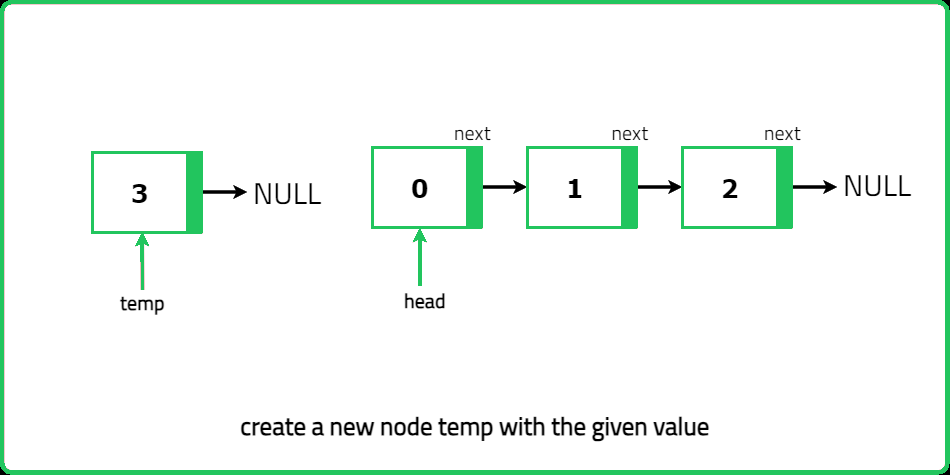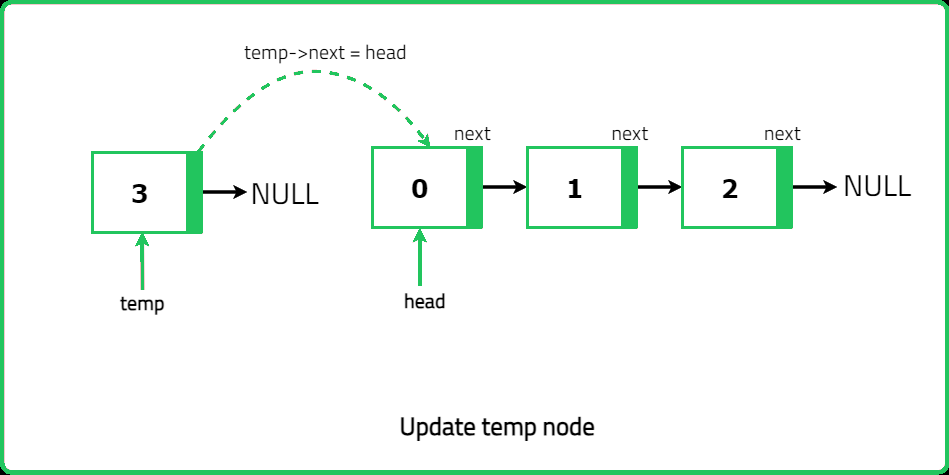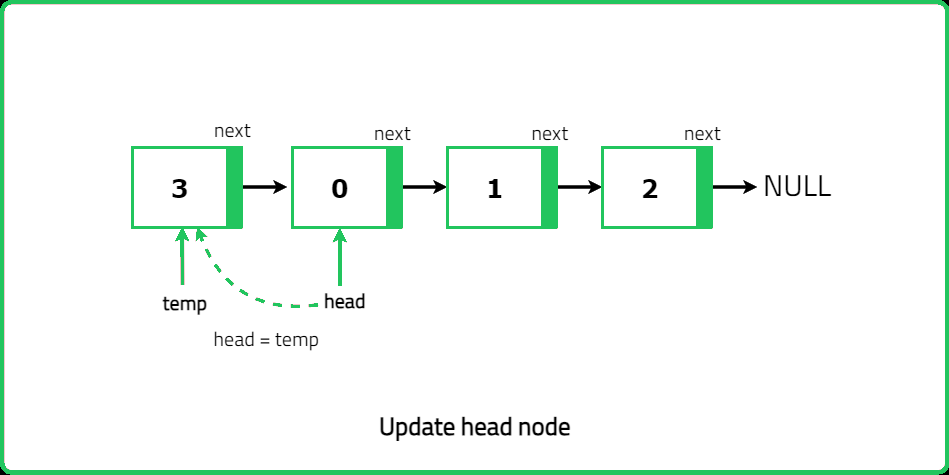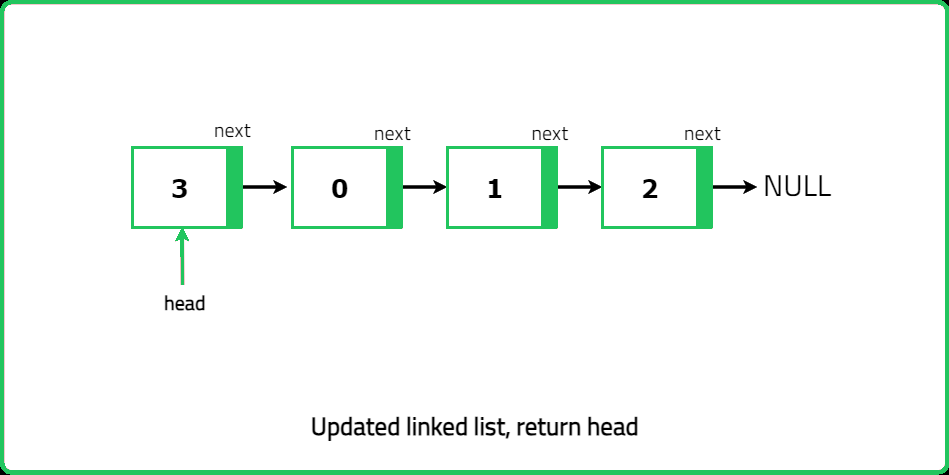Insertion at the head of LL
Linked-List
Fundamentals (Single LL)
Easy
Given the head of a singly linked list and an integer X, insert a node with value X at the head of the linked list and return the head of the modified list.
The head is the first node of the linked list.
Examples:
Input: head -> 1 -> 2 -> 3, X = 7
Output: head -> 7 -> 1 -> 2 -> 3
Explanation: 7 was added as the 1st node.
Input: head, X = 7
Output: head -> 7
Explanation: 7 was added as the 1st node.
Input: head -> 1 -> 3, X = 4
Constraints
- 0 <= number of nodes in the Linked List <= 1000
- 0 <= ListNode.val <= 100
- 0 <= X <= 100
Hints
- Create a new node with value X. Set the next pointer of the new node to the current head.
- Update the head pointer to point to the new node, making it the first node of the list.
Company Tags
DoorDash
Oracle
Twilio
Seagate Technology
Shopify
Cerner
Qualcomm
Teladoc Health
Riot Games
Roche
Databricks
JPMorgan Chase
Johnson & Johnson
MongoDB
Goldman Sachs
Flipkart
Siemens Healthineers
Byju's
Docker
Rakuten
HashiCorp
Chewy
ARM
Zynga
Optum
TCS
Cognizant
Accenture
Infosys
Capgemini
Wipro



